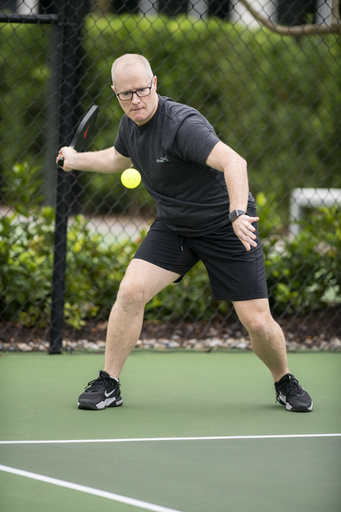



Arthrex APAC Regional Vice President Brett Jones suffered a catastrophic injury to his knee during a ski vacation. But thanks to Arthrex technology and his surgeon, he is on the road to recovery.
Brett and his family were spending the Christmas holiday in Montana when he hurt his knee while skiing with a friend.
“It was December 28 and it was the first run of the day. I took a turn and where my skis should have hit snow, they hit ice. I lost the back of my ski and went down,” he said.
Brett discovered that he had torn his anterior cruciate ligament (ACL), medial collateral ligament (MCL) lateral collateral ligament (LCL), had medial and lateral meniscal tears and tore his patellar tendon.
“There was nothing holding my leg together; it was very unstable,” Brett said.
Brett saw a surgeon in Montana who urged him to find a multiligament specialist due to the damage to his knee. Brett turned to Patrick A. Smith, MD (Columbia, MO), for help.
Dr. Smith said Brett’s injury was a challenge because, in addition to the multiligament injury, he had also torn his patellar tendon.
“Brett is a tough guy. He had a painful injury and his knee was very unstable. Luckily, he was able to give me a good exam which helped me to see how severely injured he was. Then, I was able to use the MRI to guide my surgical plan,” he said.
While most injuries of this type might have been performed in stages, Dr. Smith said Brett needed everything fixed immediately because he would need to return home to Singapore. Brett also had a request that Dr. Smith perform a primary ACL repair, which involves repairing the patient’s torn ACL as opposed to reconstructing it by harvesting a graft to make a “new” ACL for the patient.
“There are no tunnels, so the pain is reduced. Patients tend to recover a bit better and you do not have to worry about donor site morbidity from where the graft tissue is taken,” Brett said.
Dr. Smith was able to perform an ACL primary repair using the ACL Repair TightRope® implant and FiberRing® sutures.
“Brett was very hopeful we would be able to repair the ACL and it’s kudos to the Arthrex FiberRing, which allows me to do the repair even though the tissue was not in the best shape,” Dr. Smith said.
Dr. Smith then repaired the medial and lateral ligaments, using InternalBrace™ augmentation to protect them. He then turned his attention to the patellar tendon, which was also repaired using the InternalBrace technique.
“The more suture-based repair allowed me to tighten things up to restore Brett’s stability while protecting the soft tissues,” he said.
Following the 5.5-hour surgery, Brett immediately began physical therapy, initially moving his knee while in a Continuous Passive Motion (CPM) machine.
“The more he is able to move his knee, the more he will prevent scar tissue from building up. The motion will make for a healthier joint and help him get his range of motion back,” Dr. Smith said.
The physical therapy was essential to his recovery, Brett said.

“I give Brett a lot of credit,” said Dr. Smith. “He is working hard, he is doing what he needs to do, and I think he is going to have a good outcome.”
Dr. Smith said while ACL reconstruction is typically thought of over repair, the advantage to the ACL repair is that the surgeon preserves the patient’s native tissue, which is important to healing.
“And in this case, we were able to expand it outside of the ACL to the ligaments on the outside of his knee. I think it has worked well,” he said.
Brett said he is grateful to Dr. Smith and Arthrex. Since the incident, he has returned to some of the physical activities he loves, including pickleball.
“Because of them, I am ahead of the game in my recovery, especially when you consider the amount of surgery I have had,” Brett said.

